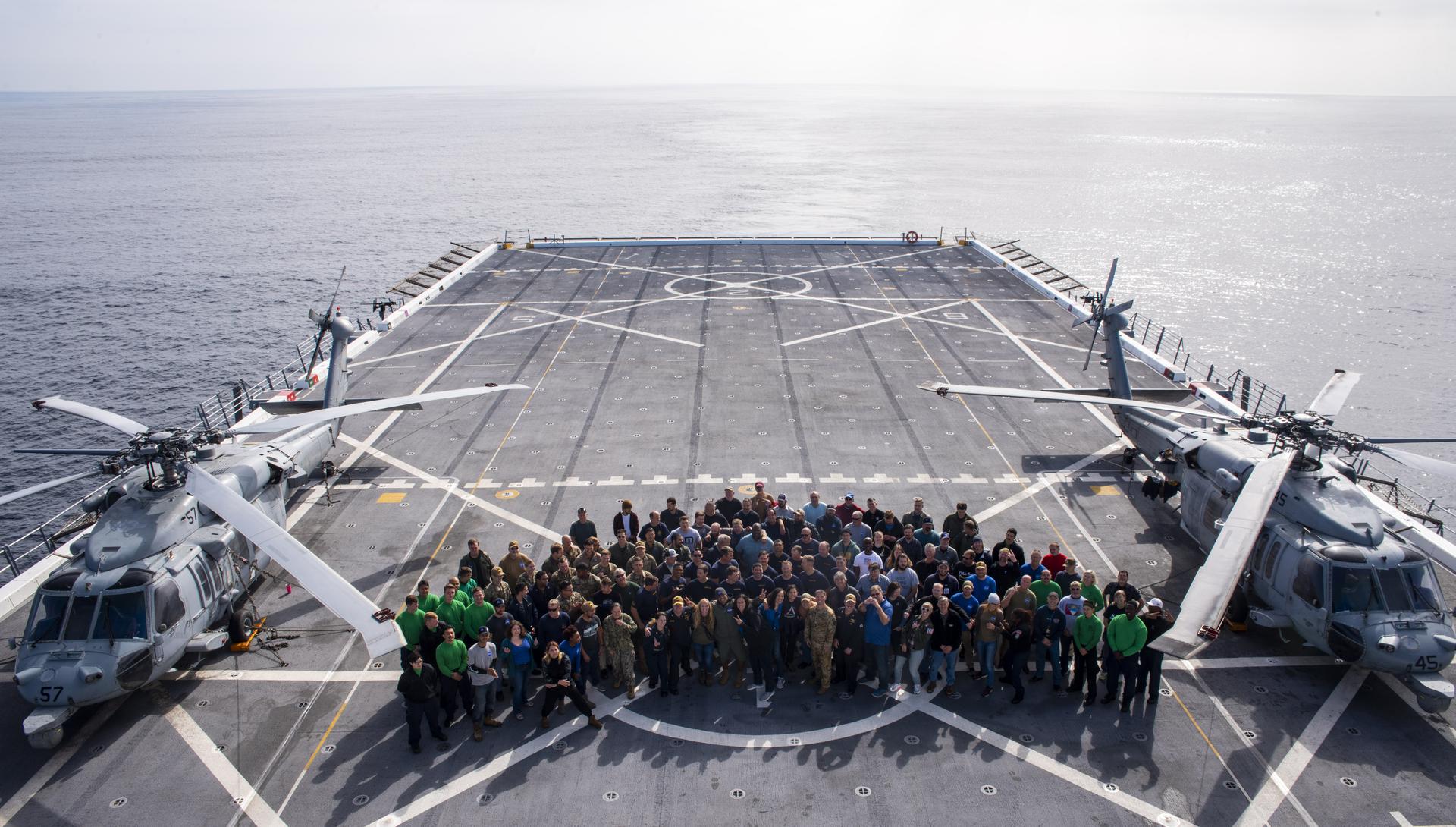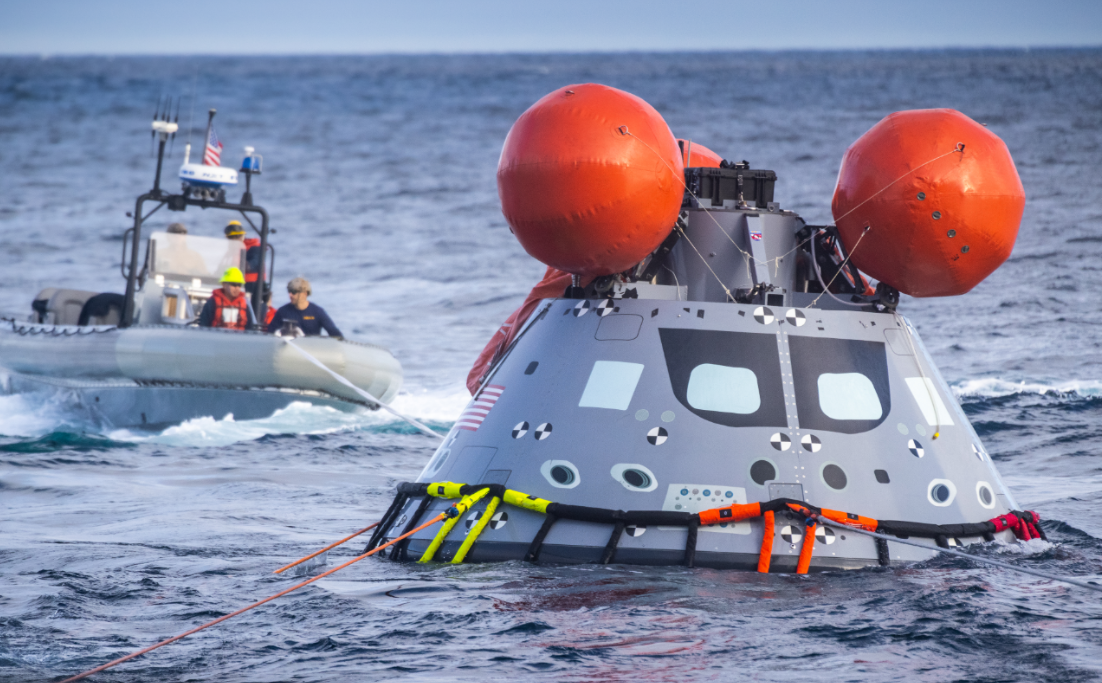
By Madison Tuttle
NASA’s Kennedy Space Center
After the successful completion of the ninth recovery test at sea, NASA’s Landing and Recovery team is certified to recover the Orion spacecraft for the upcoming Artemis I mission. During the weeklong test aboard the USS John P. Murtha, the combined NASA and Department of Defense (DoD) team completed several test objectives, ensuring the joint team will be ready to retrieve Orion after its voyage beyond the Moon.
“For the past several years, NASA and DoD have been working together to develop the procedures and hardware necessary to safely recover Orion, not only after this uncrewed flight, but also for future crewed missions onboard the spacecraft.,” said Melissa Jones, NASA recovery director based out of Exploration Ground Systems at Kennedy Space Center in Florida.

During this most recent recovery test, the team completed a full profile to run the team through the procedures to recover Orion after Artemis I. The team does this with a mockup of the Orion capsule that simulates the size and shape of the spacecraft.
As soon as Orion splashes down in the Pacific after its lunar mission, a team of divers, engineers, and technicians will depart the ship on small boats and arrive at the capsule. Once there, they will secure it and prepare to tow it into the back of the ship, known as the well deck. To ensure Orion is stabilized while in the water, engineers will attach it to an assembly that acts as an oversized fishing reel that can be adjusted pneumatically to secure the capsule while inside the well deck of the ship.
In addition to the ground and boat teams, aerial assets will be deployed to monitor Orion as it descends and slowly splashes down into the ocean. During Artemis missions, the capsule will travel around 25,000 mph before slowing to 300 mph after entering Earth’s atmosphere. After the parachutes deploy, Orion will slow to approximately 20 mph and will glide into the Pacific about 60 miles off the coast of California.
“This was our mission dry run and certifies our entire team to execute the recovery mission,” Jones said. “This has been a tremendous effort by all, and our team is incredibly excited that the next time we are together, it will be for the real mission recovery.”
Launch of the Artemis I mission is targeted for February 2022 from historic Launch Complex 39B at Kennedy Space Center in Florida. The first in a series of increasingly complex missions, Artemis I will be an uncrewed flight test of the Space Launch System rocket and Orion spacecraft; paving the way for future crewed missions to the Moon.

























